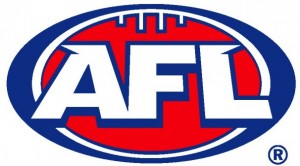 There is a general perception among people outside of the representation industry that all sports agents are rich. Examples such as Entourage, Arli$$ and Jerry Maguire have done nothing to dispel this theory. In reality, it is different.
There is a general perception among people outside of the representation industry that all sports agents are rich. Examples such as Entourage, Arli$$ and Jerry Maguire have done nothing to dispel this theory. In reality, it is different.
The Australian Football League (AFL) is the most popular sports league in Australia. The attendances are the fourth highest in the world, with crowds averaging over 33,000 per game. The league is also in the middle of a TV rights deal that sees the league receiving $1.25 billion over 5 years. Players’ salaries on average are $265,179 per season, with the highest paid player making over $1 million. Contracts are guaranteed.
There are currently 77 accredited AFL agents representing 729 players. This works out at roughly 9.5 players per agent. Taking into account the average salary, it is easy to deduce how much money an agent makes per year. Assuming the regulated 4% agent commission on AFL contracts, an agent will receive $10,607 per player per year. Multiplying this by 9.5, an average agent will make approximately $100,766 per year from his clients.
On its face this figure sounds quite attractive. However, this is not the figure an average agent would take home. There’s the cost of recruiting players, which includes transport costs of attending football games all over the country. This expense could prove costly, especially if the recruited player does not make an AFL list. There’s also the cost of servicing the player and their contract, which can also include extensive travel. An average AFL player’s career is 4 years, meaning an agent will on average bring in $42428 per client over their career.
There’s also the fees paid to be an accredited agent. The initial application fee is $990, with the same amount being payable each year an agent is accredited.
In regards to endorsements, the landscape is complex. The AFL has some of the most stringent endorsement rules of any league in the world. The largest endorsement area is boots, which the AFL deems ‘tools of the trade’. While most athletes will get free boots or store credits, large contracts are rare. There are only a handful of clients who make in the vicinity of high five to low six figures annually. Some of the more prominent and personable athletes will do appearances.
Larger agencies will often fair better than average, however it comes at a price. While the pooling of resources can lead to lower costs of recruiting and servicing, an agent will generally only receive 40% of commissions they earn from the company. In order to sustain this, the ratio of clients per agent is higher than normal. One of those agencies is Elite Sports Properties. The agency has 6 accredited agents representing 131 athletes, for an average of nearly 22 clients per agent.
With these factors in mind, the question has to be asked, how do agents survive financially? Aside from the larger firms managing more clients, some agents have secondary careers outside of sports. Others provide sports consulting, while a select few have roles as sports journalists and commentators.
Based on the above information, it’s no surprise that the amount of accredited agents has dropped by over 10% from 2 years ago.
